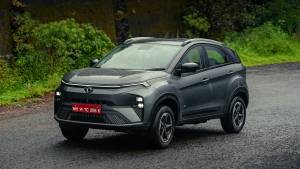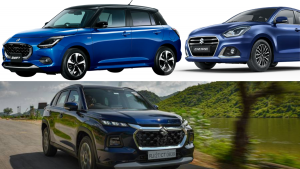Comparison test: Hyundai Grand i10 Nios vs Maruti Suzuki Swift AMT
With the all-new Grand i10 Nios, Hyundai hopes to leave a mark in the small hatchback segment, where Maruti Suzuki's Swift rules roost with the highest sales. No doubt thanks to its sporty design, spacious cabin and efficient powertrains. Hyundai would have to bring everything they've got to have a chance, then.
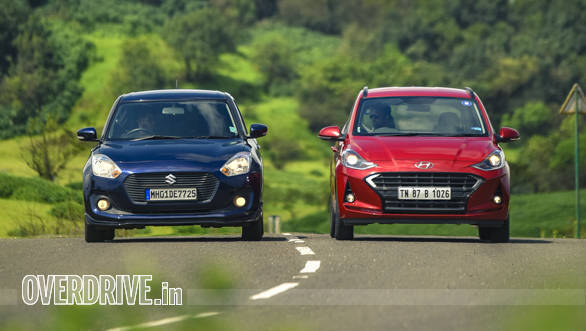
But, in typical Hyundai fashion, a fully-loaded petrol automatic isn't available something that Maruti realised people wanted, and remedied with the (expensive) Swift ZXi+ last year, though they didn't have a car to lend us for this shoot which is why you see a lower variant here. The highest spec automatic Nios you can have, however, is a Sportz variant, and the Asta is the one that gets most of the headline features. Does that hurt the Nios' chances? Let's start right at the top.
Styling
Hyundais are getting edgy! At least that's the impression from the front of the Nios, with its wide grille, boomerang LED DRLs, sharply creased hood, scalloped bumpers and detailed headlights. It's an interpretation of the family face from the earlier Grand i10 but I don't think anyone would mistake the new one for cute anymore. There are bits of Santro in there too, and the rear is a dead ringer for the Tata Tiago. The bootlid does have one badge too many on it, in stark contrast to the Swift's near-debadged look.
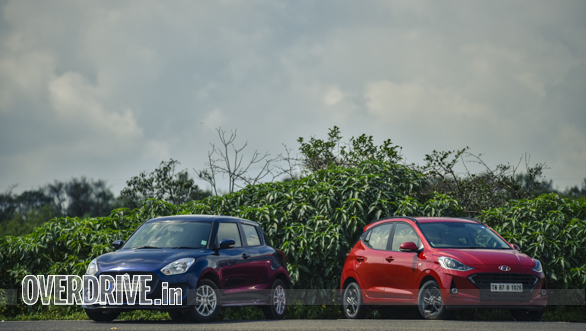
The Swift is also the visibly larger car, being both 35mm longer and a good 55mm wider than the Nios, though both cars have the same 2,450mm wheelbase. It's got a more squat stance to it, and the rising windowline and flared haunches are a Swift trademark, which have aged quite well. The Swift ZXi+ gets the dramatic LED headlights and DRLs, while the lower variant we borrowed from a friend gets more ordinary looking halogen headlights - this car also has an excellent, subtle body kit from the dealer applied. The Nios gets halogen projectors, which look quite expensive and upmarket, up close at least.
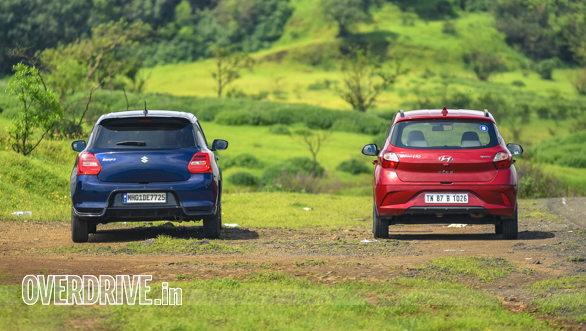
Though, the Swift AMT rides on 15-inch alloy wheels with meatier rubber, sized 185/65, while the Nios AMT looks a little awkward on its 14-inch wheel and spindly 165/65 tyre combo. Again, the ZXi+ Swift gets striking diamond cut alloys, while the Nios' wheels are painted slate grey. And while the Nios warrants a second look now because of its novelty, I know which one I always end up looking back towards after I park it it's the Swift that gets style points for me.
Interiors
Again, Hyundai is getting cabin aesthetics spot on with their new cars. From the Santro to the Venue and now the Grand i10, they all have an air of premiumness inside. The Nios benefits from unique and great looking grey upholstery, with touches like the rotary AC vents and indented dash panel helping. The 8-inch touchscreen infotainment with Apple/Android connectivity, Arkamys sound and six speakers is slick and gets bonus points for having physical controls as well.
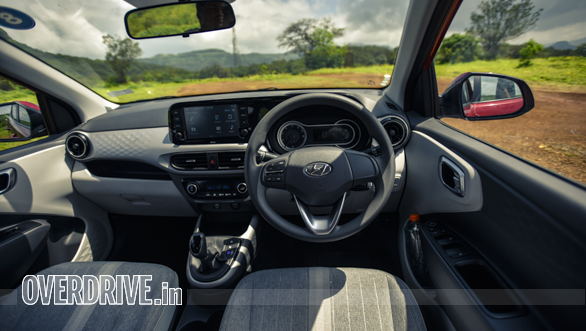
This is the best looking/most practical cabin of the segment, though it falters in few areas. Unfortunately, the Nios' intrumentation looks a little bare with its analogue-digital set-up for revs and driver information. It looks like Hyundai almost gave it a full set of analogue dials and then decided to cut costs. The Sportz misses out on the extras that the Asta gets like the wireless charging feature, though it does have twin USB charge ports up front. Also unfortunate are the fixed headrests all around, another area where the higher-specced Asta gets at least does better, offering adjustable headrests in the rear.
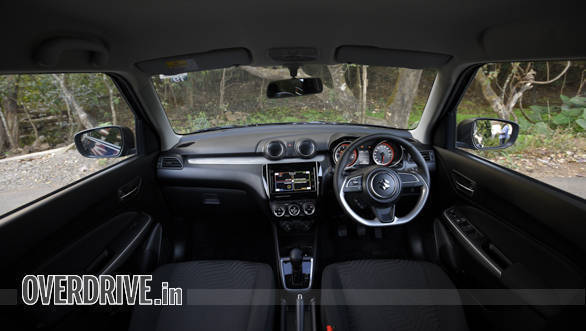
The Swift, thankfully, gets adjustable headrests front and rear. And despite the all-black cabin, it feels more spacious inside thanks to the extra width. The hard, shiny plastics in the Swift would appear to be a little lower rent than in the Nios, though the binnacled instrumentation with its dramatic red backlit borders might just be my favourite set of dials in any car this side of Rs 15 lakh. Only the top-end variant gets the Maruti 7-inch touchscreen infotainment, with Apple/Android integration. In fact it gets everything you could want including automatic headlights, push button start/stop and a rear windscreen wiper, but it all comes at a price. The Nios evens things out by offering a cooled glovebox and rear AC vents.
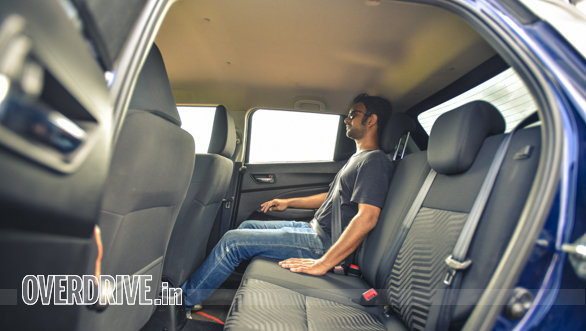
Up front, the Swift's seats offer great bolstering and support, though people with a heftier build may find that a little uncomfortable. Kneeroom in the rear of the Nios is marginally better than the Swift thanks to its clever use of space, but it can't hide the fact that it's narrower. Three adults in the rear bench of the Swift would be more comfortable, that's for sure. Headroom in both could be an issue for anyone over six feet tall, and the Nios' headrests don't really support taller passenger's necks.
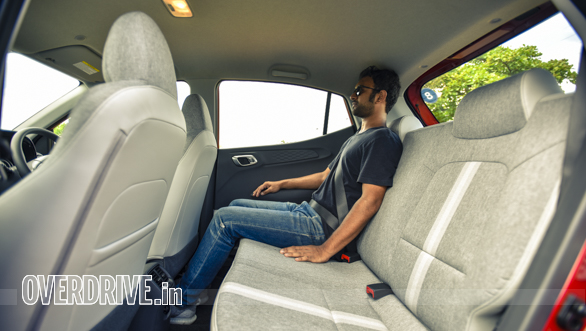
Despite what the numbers say (268 litres for the Swift, vs 260 litres for the Nios), the Swift's cargo area is wider again, and the 60:40 split offers more flexibility than the Nios.
Safety features
Hyundai and Maruti Suzuki offer the bare minimum of two airbags as standard across the range, and could stand to learn a thing or two from Ford, or even Renault both offer up to four airbags on similarly, or lower priced hatchbacks. The Swift's adjustable headrests all around are a big plus point.
Engine, performance and efficiency
The Grand i10 and Swift have always been very closely matched on paper both have 1.2-litre petrol engines (both BSVI compliant) with 83PS of power, 113Nm torque and 5-speed AMTs. The Swift has a slight advantage in the 0-100kmph dash, with a time of 13.6s to the Nios' 13.9s, and the K12B engine in the Swift is more refined. But, the extra development time Hyundai has put into their new in-house AMT (first seen on the Santro) shows in the smoother, more intuitive shifts.
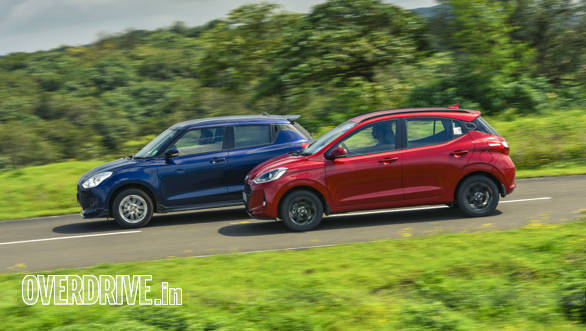
The Swift has more pronounced head nod, especially on shifts at higher revs, through the first few gears, while the Nios only seems to pause a little longer than ideal between second and third gears. The shift points for the Nios seem to be calibrated better, shifting early (around 2,000rpm) in first to avoid jerkiness, but holding onto second a little longer (between 2,500-3,000rpm) in the city. The Swift's AMT on the other hand is prone to upshifting early all the time, which means you'll have to recalibrate your driving style. Both these AMTs have trouble selecting the right gear for uphill climbs, and need a firm throttle foot to avoid upshifting and falling out of the power mid-way through. Importantly, Hyundai has finally managed to get its powertrain to perform efficiently, and the Nios posts incredible figures both for the city and highway, surprisingly besting the Maruti. The Nios manages 15.7kmpl in the city, and 23.2kmpl on the highway, while the Swift managed 13kmpl in the city and 21.3kmpl on the highway.
Ride and handling
It looks like the Nios was set up with the Swift as a benchmark, and in doing so, has the firmer ride quality. While it does a good job of approaching a European car's ride quality, with an even ride at low speeds, it tends to get a little bouncy at high speeds. The Swift, in contrast, filters out a little more of the road but will still crash noisily over larger ruts and imperfections. With three passengers in the car, the Swift proved to be more comfortable and we think both could benefit from lowered tyre pressures, though efficiency will probably hurt a bit for it.
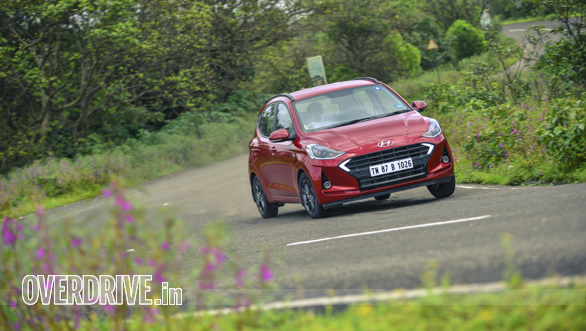
Both these cars have light and breezy steerings, set up for agility and manoeuvrability in the city, and U-turns in either can be taken single-handed. The Nios' steering feels a little too eager to return to centre, while the Swift's is perhaps not eager enough, so it'll come down to personal preference. Out on the highway though, the Nios' steering wheel weighs up enough to not require constant corrections, which you'll find yourself making in the Swift.
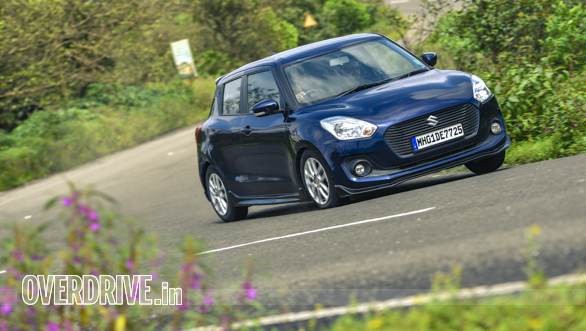
Where that agility pays off is in the handling, where the Swift feels more alive, despite both cars lacking outright feedback from the steering. A huge part of that is how they're set up to react at the limit. The Nios, despite its skinnier tyres, can hold its line well and irons out mid-corner bumps, tending towards understeer if you push too hard. The Swift will wriggle and ask for steering corrections, and go from understeer to a bit of oversteer, if you come in too hot. Again, it's a personal preference but most drivers will find the Nios more predictable in most situations.
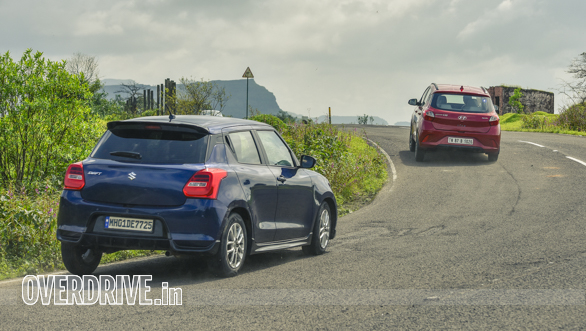
Verdict
Prices for this segment of hatchback have crept up, and the Swift seems like an expensive buy, not considering the current discounts, of course. Sure, you could choose the Swift ZXi AMT, but you lose the touchscreen infotainment and reverse camera, and it still is marginally more expensive than the Nios! And with these two otherwise trading feature for feature, ride comfort and with the surprising fuel efficiency of the Hyundai, the Nios makes a convincing case for itself, considering it's one whole lakh of rupees more affordable and comes with a variable basic warranty up to three-year/1,00,000km, against the Swift's two-year/40,000km standard warranty.
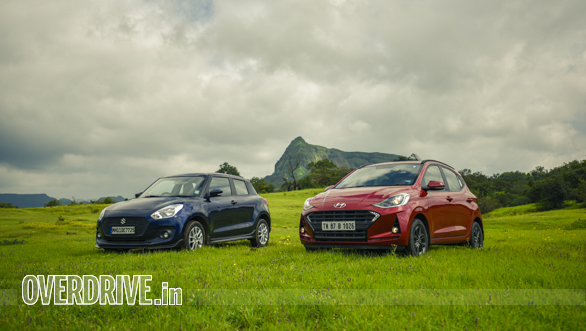
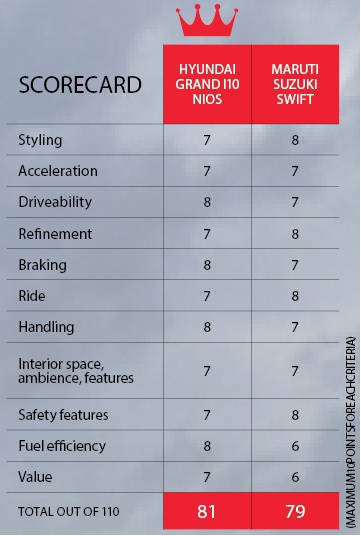
Photos: Anis Shaikh
Starts Rs 4.98 Lakhs
1186cc
Manual
75
194
24.95 Kmpl
Starts Rs 5.73 Lakhs
1197cc
Automatic
89.73
113
23.76 Kmpl
Starts Rs 5.05 Lakhs
1197cc
Automatic
75
114
20.5 Kmpl
Starts Rs 4.6 Lakhs
1199cc
Automatic
-NA-
113
-NA-

